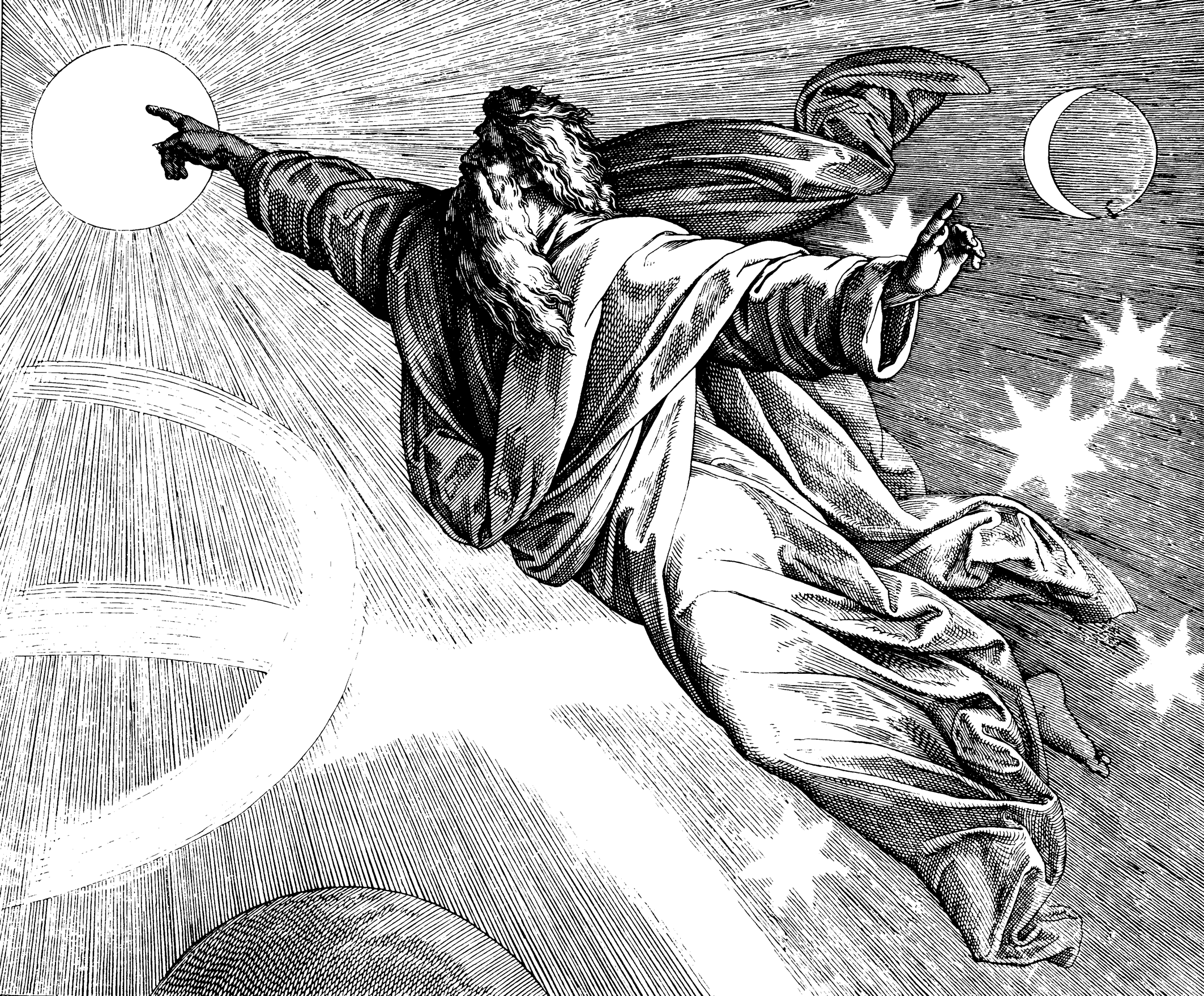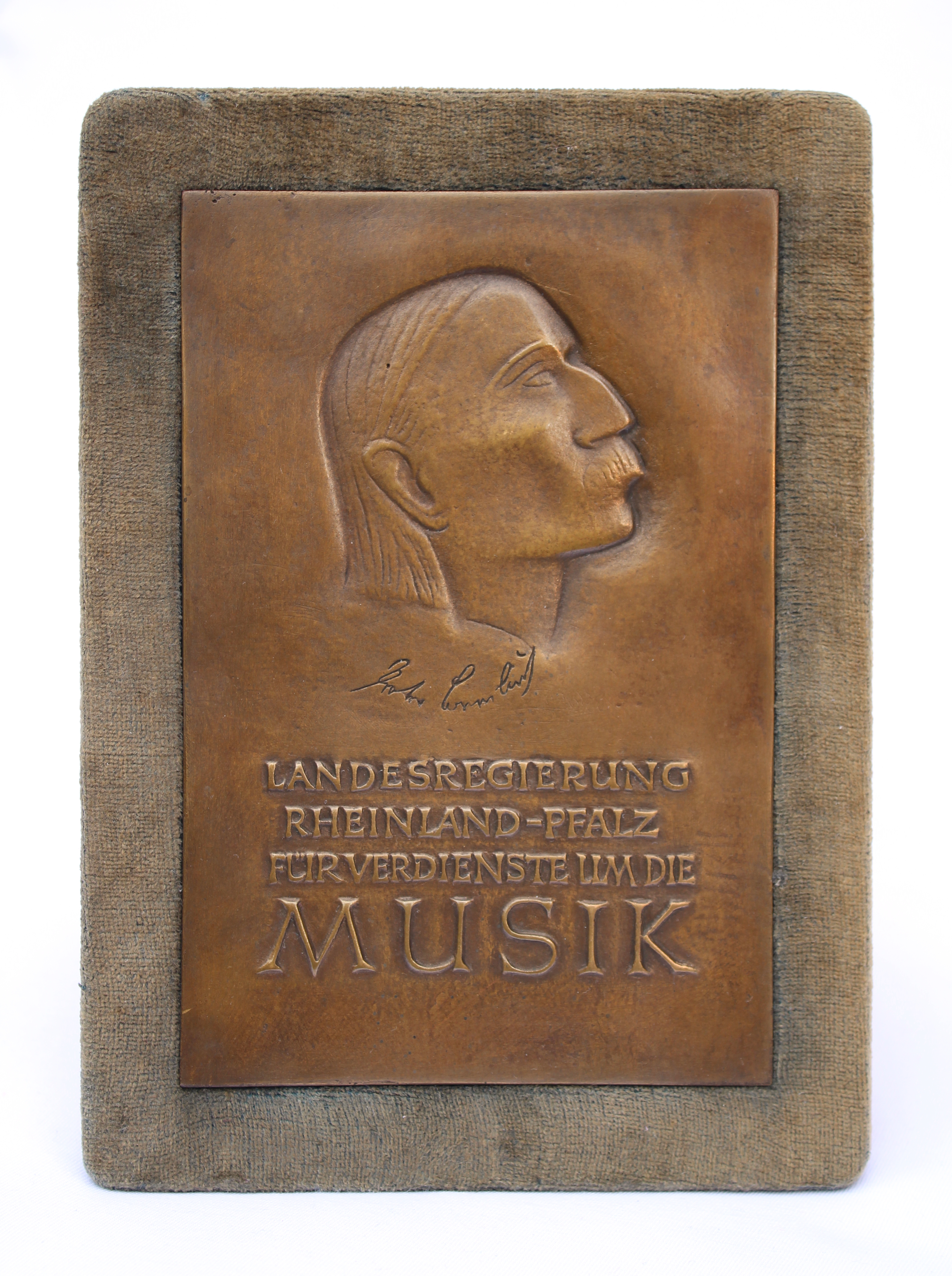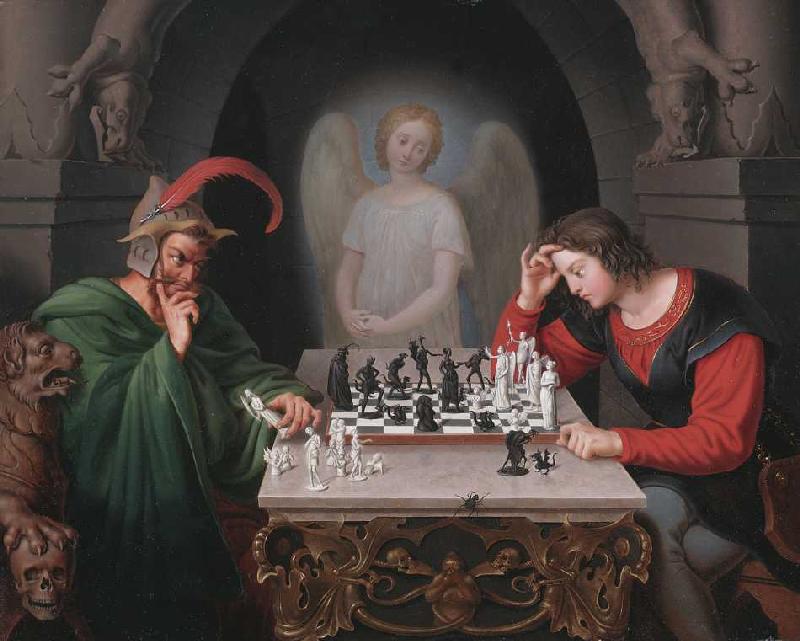|
Aleksander Lesser
Aleksander Lesser (13 May 1814 – 13 March 1884) was a Polish painter, illustrator, sketch artist, art critic, and amateur researcher of antiquities. Lesser was Jewish, and became one of the first artists to depict scenes from modern Jewish history in Poland. He specialized in Polish historical and contemporary themes, and he was known and respected in artistic and scholarly circles. He was a member of Kraków's Academy of Learning and co-founder of Warsaw's Zachęta, the Society for Encouragement of the Fine Arts."Lesser, Aleksander," ''Encyklopedia powszechna PWN'' (PWN Universal Encyclopedia), vol. 2, p. 705. Early life Aleksander Lesser was born in Warsaw in 1814 to Levy Lesser (1791–1870), a well-known trader and banker, and Róża Loewenstein (1790–1840). Lesser's formal study of painting began in the Warsaw Lyceum under Aleksander Kokular before continuing at the Faculty of Fine Arts at the Royal University of Warsaw in 1830–1831 under Antoni Brodow ... [...More Info...] [...Related Items...] OR: [Wikipedia] [Google] [Baidu] [Amazon] |
Warsaw
Warsaw, officially the Capital City of Warsaw, is the capital and List of cities and towns in Poland, largest city of Poland. The metropolis stands on the Vistula, River Vistula in east-central Poland. Its population is officially estimated at 1.86 million residents within a Warsaw metropolitan area, greater metropolitan area of 3.27 million residents, which makes Warsaw the List of cities in the European Union by population within city limits, 6th most-populous city in the European Union. The city area measures and comprises List of districts and neighbourhoods of Warsaw, 18 districts, while the metropolitan area covers . Warsaw is classified as an Globalization and World Cities Research Network#Alpha 2, alpha global city, a major political, economic and cultural hub, and the country's seat of government. It is also the capital of the Masovian Voivodeship. Warsaw traces its origins to a small fishing town in Masovia. The city rose to prominence in the late 16th cent ... [...More Info...] [...Related Items...] OR: [Wikipedia] [Google] [Baidu] [Amazon] |
Warsaw Lyceum
The Warsaw Lyceum (; ) was a secondary school that existed in Warsaw, under the Kingdom of Prussia and under the Kingdom of Poland, from 1804 to its closing in 1831 by Imperial Russia following the Polish November 1830 Uprising. History The Warsaw Lyceum was founded in 1804 by the Kingdom of Prussia as a German language school in Warsaw, which had become part of New East Prussia following the 1795 Third Partition of the Polish-Lithuanian Commonwealth. In the Second Partition of the Polish-Lithuanian Commonwealth (1793), Prussia had acquired South Prussia, and had established a branch of its Cadet Corps schools in Kalisch. In 1804, in Warsaw, a humanistic secondary school for boys was opened, divided according to the Prussian educational model into six classes, plus two preparatory ones. In German, it taught Latin, Greek, German and French, philosophy, ethics, mathematics and natural sciences, and (in Polish) the Polish language. Samuel Linde was appointed director of the ... [...More Info...] [...Related Items...] OR: [Wikipedia] [Google] [Baidu] [Amazon] |
German Romanticism
German Romanticism () was the dominant intellectual movement of German-speaking countries in the late 18th and early 19th centuries, influencing philosophy, aesthetics, literature, and criticism. Compared to English Romanticism, the German variety developed relatively early, and, in the opening years, coincided with Weimar Classicism (1772–1805). The early period, roughly 1797 to 1802, is referred to as ''Frühromantik'' or Jena Romanticism. The philosophers and writers central to the movement were Wilhelm Heinrich Wackenroder (1773–1798), Friedrich Wilhelm Joseph Schelling (1775–1854), Friedrich Schleiermacher (1768–1834), Karl Wilhelm Friedrich Schlegel (1772–1829), August Wilhelm Schlegel (1767–1845), Ludwig Tieck (1773–1853), and Friedrich von Hardenberg (Novalis) (1772–1801). The early German Romantics strove to create a new synthesis of art, philosophy, and science, by viewing the Middle Ages as a simpler period of integrated culture; however, the German ... [...More Info...] [...Related Items...] OR: [Wikipedia] [Google] [Baidu] [Amazon] |
Julius Schnorr Von Carolsfeld
Julius Schnorr von Carolsfeld (26 March 1794 – 24 May 1872) () was a German painter, chiefly of Biblical subjects. As a young man he associated with the painters of the Nazarene movement who revived the florid Renaissance style in religious art. He is remembered for his extensive ''Picture Bible'', and his designs for stained glass windows in cathedrals. Biography Schnorr was born in Leipzig, the son of Veit Hanns Schnorr von CarolsfeldArtist biography in ''German Masters of the Nineteenth Century'', pp.272–3 (1764–1841), a draughtsman, engraver, and painter, from whom he received his initial artistic education, his earliest known works being copies of the Neoclassical drawings of John Flaxman. In 1811 he entered the Vienna Academy, from which Johann Friedrich Overbeck and others who rebelled against the old conventional style had been expelled about a year before. There he studied under Friedrich Heinrich Füger, and became friends with Joseph Anton Koch and Hei ... [...More Info...] [...Related Items...] OR: [Wikipedia] [Google] [Baidu] [Amazon] |
Heinrich Maria Von Hess
Heinrich Maria von Hess (19 April 1798 in Düsseldorf – 29 Märch 1863 in Munich) was a German painter, a member of the Nazarene movement. Biography Hess was born at Düsseldorf and brought up to the profession of art by his father, the engraver Carl Ernst Christoph Hess. Carl Hess had already acquired a name when in 1806 the elector of Bavaria, having been raised to a kingship by Napoleon Bonaparte, Napoleon, transferred the Düsseldorf academy and gallery to Munich. Carl Hess accompanied the academy to its new home, and there continued the education of his children. Hess studied at the Academy in Munich from 1813-1817 under Johann Peter von Langer. Heinrich Hess's skills and reputation attracted the attention of King Maximilian I of Bavaria, King Maximilian, who sent him in 1821 to Rome, with a stipend, During his four years there, he came under the influence of Johann Friedrich Overbeck. A copy Hess made of Raphael's ''The Parnassus, Parnassus'', and the study of great ex ... [...More Info...] [...Related Items...] OR: [Wikipedia] [Google] [Baidu] [Amazon] |
Peter Cornelius
Carl August Peter Cornelius (24 December 1824 – 26 October 1874) was a German composer, writer about music, poet and translator. Life He was born in Mainz to Carl Joseph Gerhard (1793–1843) and Friederike (1789–1867) Cornelius, actors in Mainz and Wiesbaden. From an early age he played the violin and composed, eventually studying with Tekla Griebel-Wandall and composition with Heinrich Esser in 1841. He lived with his painter uncle Peter von Cornelius in Berlin from 1844 to 1852, and during this time he met prominent figures such as Alexander von Humboldt, the Brothers Grimm, Friedrich Rückert and Felix Mendelssohn. His early compositions included chamber and church music and secular songs, among which stands the Stabat Mater for soloists, choir, and orchestra, composed in 1849. Cornelius's first mature works (including the opera ''Der Barbier von Bagdad'') were composed during his brief stay in Weimar (1852–1858). His next place of residence was Vienna, where he ... [...More Info...] [...Related Items...] OR: [Wikipedia] [Google] [Baidu] [Amazon] |
Munich
Munich is the capital and most populous city of Bavaria, Germany. As of 30 November 2024, its population was 1,604,384, making it the third-largest city in Germany after Berlin and Hamburg. Munich is the largest city in Germany that is not a state of its own. It ranks as the 11th-largest city in the European Union. The metropolitan area has around 3 million inhabitants, and the broader Munich Metropolitan Region is home to about 6.2 million people. It is the List of EU metropolitan regions by GDP#2021 ranking of top four German metropolitan regions, third largest metropolitan region by GDP in the European Union. Munich is located on the river Isar north of the Alps. It is the seat of the Upper Bavaria, Upper Bavarian administrative region. With 4,500 people per km2, Munich is Germany's most densely populated municipality. It is also the second-largest city in the Bavarian language, Bavarian dialect area after Vienna. The first record of Munich dates to 1158. The city ha ... [...More Info...] [...Related Items...] OR: [Wikipedia] [Google] [Baidu] [Amazon] |
Carl Christian Vogel Von Vogelstein
Carl Christian Vogel von Vogelstein (26 June 1788, Wildenfels, Electoral Saxony – 4 March 1868, Munich), born ''Vogel'', was a German painter. Life Son of the child and portrait painter Christian Leberecht Vogel, Vogel was trained early in life by his father. From 1804 he visited the Kunstakademie in Dresden, where he copied many paintings in the Gemäldegalerie and also produced the first of his own portraits. In 1807 he replied to an invitation from Baron von Löwenstern, whose children he had taught in Dresden, to come to Tartu, Dorpat in Livonia. In 1808 he moved to Saint Petersburg, where he set up a studio in the princely and successfully worked producing portraits of nobles and diplomats. In 1812 Vogel was finally rich enough to make a long-desired grand tour to Italy, stopping off at Berlin and Dresden on the way, where he painted his parents and Franz Pettrich. From 1813 to 1820 he lived in Rome, where many German artists were active at that time. He tried to run ... [...More Info...] [...Related Items...] OR: [Wikipedia] [Google] [Baidu] [Amazon] |
Moritz Retzsch
Friedrich August Moritz Retzsch (December 9, 1779 – June 11, 1857) was a German painter, draughtsman, and etcher. Retzsch was born in the Saxon capital Dresden. He joined the Dresden Academy of Fine Arts in 1798 under Cajetan Toscani and Józef Grassi, later working autodidactically, copying the famous pictures of the Gemäldegalerie, among them a copy of the '' Sixtinian Madonna''. He was made a member of the Academy in 1817 and professor in 1824. The Cotta publishing house commissioned illustrations for Johann Wolfgang Goethe's ''Faust'' (26 plates), which made him financially independent. Goethe liked his work, and he illustrated works by other famous authors, most notably Friedrich Schiller's ''Lied von der Glocke'' (43 plates), a ''Shakespeare Gallery'' (80 plates), and Bürger's ''Ballads'' (15 plates). He also did oil paintings on classical subjects, and portraits. Many of his works were created in a house in the Lößnitz, with a view of the Elbe Valley. As a ... [...More Info...] [...Related Items...] OR: [Wikipedia] [Google] [Baidu] [Amazon] |
Dresden
Dresden (; ; Upper Saxon German, Upper Saxon: ''Dräsdn''; , ) is the capital city of the States of Germany, German state of Saxony and its second most populous city after Leipzig. It is the List of cities in Germany by population, 12th most populous city of Germany, the fourth largest by area (after Berlin, Hamburg, and Cologne), and the third-most populous city in the area of former East Germany, after Berlin and Leipzig. Dresden's urban area comprises the towns of Freital, Pirna, Radebeul, Meissen, Coswig, Saxony, Coswig, Radeberg, and Heidenau and has around 790,000 inhabitants. The Dresden metropolitan area has approximately 1.34 million inhabitants. Dresden is the second largest city on the River Elbe after Hamburg. Most of the city's population lives in the Dresden Basin, Elbe Valley, but a large, albeit very sparsely populated, area of the city east of the Elbe lies in the West Lusatian Hill Country and Uplands (the westernmost part of the Sudetes) and thus in Lusatia. ... [...More Info...] [...Related Items...] OR: [Wikipedia] [Google] [Baidu] [Amazon] |
Polish Uprising Of 1831
The November Uprising (1830–31) (), also known as the Polish–Russian War 1830–31 or the Cadet Revolution, was an armed rebellion in the heartland of partitioned Poland against the Russian Empire. The uprising began on 29 November 1830 in Warsaw when young Polish officers from the military academy of the Army of Congress Poland revolted, led by Lieutenant Piotr Wysocki. Large segments of the peoples of Lithuania, Belarus, and Right-bank Ukraine soon joined the uprising. Although the insurgents achieved local successes, a numerically superior Imperial Russian Army under Ivan Paskevich eventually crushed the uprising. "Polish Uprising of 1830–31." ''The Great Soviet Encyclopedia'', 3rd ed., (1970–1979). Gale Group ... [...More Info...] [...Related Items...] OR: [Wikipedia] [Google] [Baidu] [Amazon] |
Imperial Russian
The Russian Empire was an empire that spanned most of northern Eurasia from its establishment in November 1721 until the proclamation of the Russian Republic in September 1917. At its height in the late 19th century, it covered about , roughly one-sixth of the world's landmass, making it the third-largest empire in history, behind only the British and Mongol empires. It also colonized Alaska between 1799 and 1867. The empire's 1897 census, the only one it conducted, found a population of 125.6 million with considerable ethnic, linguistic, religious, and socioeconomic diversity. From the 10th to 17th centuries, the Russians had been ruled by a noble class known as the boyars, above whom was the tsar, an absolute monarch. The groundwork of the Russian Empire was laid by Ivan III (), who greatly expanded his domain, established a centralized Russian national state, and secured independence against the Tatars. His grandson, Ivan IV (), became in 1547 the first Russian mo ... [...More Info...] [...Related Items...] OR: [Wikipedia] [Google] [Baidu] [Amazon] |








